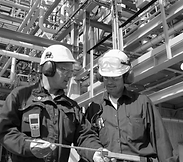Engineering and Technology Quarterly Reviews
ISSN 2622-9374




Published: 07 October 2019
Predicting The Time And Cost of Fireboat Construction Using Earned Value Method (EVM)
I Nengah Putra Apriyanto, Romie Oktovianus Bura, Suyono Thamrin, Siswo Hadi Sumantri, Supartono, Arica Dwi Susanto
Indonesia Defense University, Indonesian Naval Technology College

Download Full-Text Pdf
10.5281/zenodo.3475369
Pages: 114-125
Keywords: Controlling, Planning, Cost Prediction, Time prediction, EVM, Schedule, Fireboat
Abstract
Companies located in Surabaya which are mainly engaged in the production of commercial vessels, providing ship repair and maintenance services as well as general engineering with order-based specifications often experiencing problems of delays and cost overruns because of lack of supervision. Along with the development of the technology industry, ship production requires every shipyard to evaluate their system. Poor performance and lack of control and supervision have caused delays in the construction of new vessels. By using an Earned Value Method (EVM) calculation, it can predict the completion time and the remaining costs of fireboat construction, find deviations between plans and reality, and encourage to look for the causes. Based on the calculation analysis results of the fireboat construction, the researcher predicts the cost of remaining work as Rp. 23,616,760,065 and predicts the total cost at the end of the work of Rp. 157,383,943,827 and researchers also predicted project completion time of 381 days.
References
- Agarwal, R. (2013). Critical Path Method in Designing Feasible Solutions. International Journal of Scientific Research and Reviews , 190-202.
- Agyei, W. (2015). Project Planning And Scheduling Using PERT And CPM Techniques With Linear Programming: Case Study. International Journal of Scientific & Technology Research, II (1), 222-227.
- Alecu, F. (2014). Cost Control and Performance Review of Software Projects by Using the Earned Value Management. Oeconomics of Knowledge , 2-6.
- Andawei, M.-E. M. (2014). Extension of Time Determination in Construction Projects in Nigeria: The Critical Path Method. The International Journal Of Engineering And Science (IJES) , 48-51.
- Arica Dwi Susanto, A. A. (2018). The Optimization of Multipurpose Building Development on Project Scheduling Using Precedence Diagram Method (PDM). Asro Journal-STTAL, 9(1), 1-7.
- Arica Dwi Susanto, A. O. (2017). Analysis of The Propulsion System Toward The Speed Reduction of Vessels Type PC-43. International Journal of Engineering Research and Applications (IJERA), 7 (4), 08-15.
- Arsian, Y. (2017). Planning and Monitoring of Industrial Punch Development Processes. Journal of Engineering Research and Applied Science , 615-522.
- Asiyanto. (2005). Construction Project Cost Management. Jakarta: Pradyna Paramita.
- Balla, G. T. (1995). Critical path analysis for the management of fractured neck of femur. Australian Journal of Public Health , 155-159.
- Callahan, M. T. (1992). Construction Project Scheduling. New York: McGraw Hill.
- Czarnigowska, A. (2008). Earned value method as a tool for project control . Budownictwo i Architektura 3 , 15-32.
- Czarnigowska, A. (2008). Earned Value Method as a Tool For Project Control. Budownictwo i Architektura , 15-32.
- Czemplik, A. (2014). Application of Earned Value Method to Progress Control of Construction Projects. Procedia Engineering , 424-428.
- Daniel Castro-Lacouture, A. G.-J. (2009). Contruction Project Scheduling with Time, Cost and Material Restrictions Using Fuzzy Mathematical Models and Critical Path Method. Journal of Construction Engineering and Management , 1096-1104.
- Dwaikat, L. N. (2016). Measuring the Actual Energy Cost Performance of Green Buildings: A Test of the Earned Value Management Approach. Energies journal , 1-20.
- Fatemeh Nouban, N. G. (2017). The Factors Affecting The Methods of Construction Projects Scheduling: An State of The Art and Overview. Asian Journal of Natural & Applied Sciences, 6(4), 114-122.
- Flemming, Q. K. (1994). The Essence and Evolution of Earned Value. New York: AACC Transaction.
- Francis, A. (2016). Comparing Time and Quantity Scales For Relationship and Float Calculations. Creative Contruction Conference (hal. 49-56). Canada: ELSEVIER.
- Gould. (1998). Construction Management. New York: McGraw Hill.
- Harris, R. B. (1998). Scheduling Project with Repeating Activities. Journal of Construction Engineering and Management , 269-278.
- I Nengah Putra, A. D. (2017). Comparative Analysis Result of Towing Tank And Numerical Calculations With Harvald Guldammer Method. International Journal of Applied Engineering Research, 12 (21), 637-645.
- I Nengah Putra, A. D. (2017). Type of Ship Trim Analysis on Fuel Consumption with a Certain Load and Draft. International Journal of Applied Engineering Research, 12 (21), 10756-10780.
- Ibrahim, B. (1993). Planning and Estimate Real of Cost. Jakarta: Bumi Aksara.
- Ikhtisholiyah. (2017). analysis of the application of time and cost management on the construction project of electric engineering building of polytechnic industry of madura (poltera). Zeta-Math Journal , 14-21.
- Indraga, M. P. (2015). Cost Performance Analysis and Integrated Schedule with the Concept of Earned Value Method (Case Study of Building Construction Projects). Jurnal Ilmiah Semesta Teknika , 106-121.
- Isaac, S. (2016). The Possibilities for Better Project Tracking based on The New Developments of The Precedence Diagramming Method. Procedia Engineering , 75-81.
- K.K.Khandelwal, D. B. (2002). Project Planning and Control With PERT and CPM. New Delhi: LAXMI PUBLICATIONS (P) LTD.
- Kim, S.-G. (2012). CPM Schedule Summarizing Function of the Beeline Diagram Method. Journal of Asian Architecture and Building Engineering , 367-374.
- M, S. (2015). Traditional Critical Path Method versus Critical Chain Project Management: A Comparative View. International Journal of Economics & Management Sciences , 1-6.
- M. Hayuningtyas, T. D. (2018). System analysis for technology transfer readiness assessment of horticultural postharvest. International Conference on Industrial and System Engineering (IConISE) (hal. 1-7). Bogor: IOP Publishing.
- Maheswari, J. U. (2015). Application of Relationship Diagramming Method (RDM) for Resource-Constrained Scheduling of Linear Construction Projects. Creative Construction Conference(hal. 308-315). New Delhi: ELSEVIER.
- Malyusz, L. (2017). An Estimation of The Learning Effect on Project Cost Scheduling. Creative Construction Conference (hal. 723-729). Croatia: ELSEVIER.
- Mazlum, M. (2015). CPM, PERT and Project Management With Fuzzy Logic Technique and Implementation On A Business. 4th International Conference on Leadership, Technology, Innovation and Business Management (hal. 348-357). Istanbul: Elsevier Ltd.
- Muhammad Kholil, B. N. (2018). Scheduling of House Development Projects with CPM and PERT Method for Time Efficiency (Case Study: House Type 36). IOP Conf. Series: Earth and Environmental Science (hal. 1-8). jakarta: IOP Publishing.
- Naderpour, A. (2011). Improving Construction Management of an Educational Canter by Applying Earned Value Technique. The Twelfth East Asia-Pacific Conference (hal. 1945-1952). Tehran: ELSEVIER.
- Nafkha, R. (2016). THE CRITICAL PATH METHOD IN ESTIMATING PROJECT DURATION. Information Systems in Management , 78-87.
- Nicholas, J. (1990). Managing Business And Engineering Projects: Concept & Implementation. New YORK: Prentice Hall.
- Nouban, F. (2017). The Factors Affecting The Methods of Construction Projects Scheduling: An State of The Art And Overview. Asian Journal of Natural & Applied Sciences , 114-122.
- R.Lin, H. J. (2009). A fuzzy pert approach to evaluate plant construction project scheduling risk under uncertain resources capacity. Journal of Industrial Engineering and Management , 31-47.
- Sahid, D. S. (2012). Implementasi Critical Path Method dan PERT Analysis Pada Proyek Global Technology For Local Community. Jurnal Teknologi Informasi dan Telematika, 14-22.
- Shailla. (2014). Comparative Study of Management Operation System Techniques (MOST) and CPM in Construction Scheduling. International Journal of Engineering Trends and Technology (IJETT) , 371-379.
- Shan, Y. (2014). Integration of Building Information Modeling and Critical Path Method Schedules to Simulate the Impact of Temperature and Humidity at the Project Level. buildings jounal , 295-319.
- Silvianita, R. F. (2018). Fast Missile Boat Project Planning using CPM and What If Analysis Method. IOP Conf. Series: Earth and Environmental Science (hal. 1-6). jakarta: IOP Publishing.
- Siswanto. (2007). Operation Research Jilid II. Jakarta: Erlangga.
- Subramani, T. (2014). Analysis of Cost Controlling In Construction Industries by Earned Value Method Using Primavera. Journal of Engineering Research and Applications , 143-153.
- Tan, P. d. (1998). Construction Project Scheduling by Rangked Positional Weight Method. Canadian Journal of Civil Engineering , 424-436.
- Wilson, B. (2013). Earned Value Management Systems: Challenges and Future Direction. Journal of Integrated Enterprise Systems , 9-17.
- Wong, Y. (1964). Critical Path Analysis for New Product Planning. Journal of Marketing , 53-59.
- Woodstock, D. H. (1998). Contruction Management. New York: John Wiley.
- Y. Arslan, H. B. (2017). Planning and Monitoring of industrial punch development processes . Journal of Engineering Research and Applied Science , 615-622.
- Zawistowski, J. (2010). Application of Modified Earned Value Method For Assessing The Risk And Progress of Construction Projects. The 10th International Conference (hal. 557-560). Lithuania: Vilnius Gediminas Technical University



